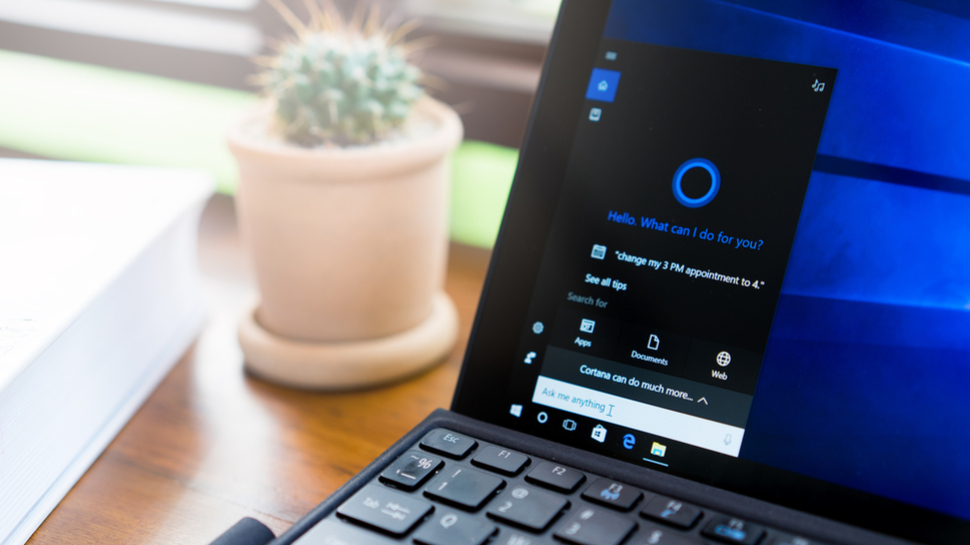New Windows 10 preview promotes Amazon Alexa (and other assistants) to the lock screen
Cortana getting the chop? Not exactly…

Windows 10 has a new preview build of the update that's due to land in the latter half of 2019, and while it only comes with a few changes (unsurprisingly), one is pretty interesting, with Microsoft giving digital assistants like Amazon’s Alexa a promotion to the lock screen of the OS.
In other words, for Windows 10 19H2 preview build 18362.10005, which has just been released to the slow ring, third-party digital assistants can be voice activated direct from the Windows 10 lock screen.
- How to reinstall Windows 10
- Buy Windows 10: the cheapest prices in July 2019
- Windows 10 May 2019 Update problems: how to fix them
Previously, if the operating system was locked, the only digital assistant you could get the attention of was Microsoft’s own built-in Cortana. With this change, the likes of Alexa can now be activated from the lock screen.
We mention Alexa specifically because Microsoft has already brought Amazon’s digital assistant to some Windows 10 laptops and PCs, with deeper integration between Cortana and Alexa.
And back at the start of 2019, we witnessed Microsoft’s CEO, Satya Nadella, admit that Cortana isn’t being positioned to compete directly with the likes of Alexa or Google Assistant, but rather to integrate with these rival solutions.
So this move slots neatly in with that angle, and ultimately, this integration is aimed at making Cortana far more powerful and indispensable in the long run, as we saw at Build 2019.
And with Cortana being split from Windows search, with the aim being to eventually turn the assistant into a completely standalone app – separate from Windows 10 – we could see a situation hinted at in December 2018 where vendors can actually choose a third-party assistant for their Windows 10 device rather than Cortana.
Sign up for breaking news, reviews, opinion, top tech deals, and more.
Inking improvement
Aside from that, the fresh preview build contains a fix aiming to reduce the latency involved when inking (using Windows Ink with a stylus and touchscreen). This allows manufacturers to use a latency level based on the actual hardware capabilities of their display and device (rather than being stuck with a more generalized level of latency selected by the operating system, based on a typical hardware configuration – essentially a best guess situation).
There are a few other changes detailed in Microsoft’s blog post, including more serious bits and pieces for Azure Active Directory, but as we noted at the outset, there’s not a huge amount happening elsewhere.
That’s not surprising, though, given that Microsoft has made it clear that Windows 10 19H2 will be a more minor update which is about tweaking and improving performance, rather than introducing any big new headline features.
Don’t see any of these features yet on your preview build of Windows 10? One final thing to note is that Microsoft also explains that all this fresh functionality is turned off by default currently, and the features will be rolled out gradually.
The idea is this more controlled approach will give Microsoft an improved level of feedback on the build quality, putting the developers working on the OS in a better position to fine-tune things as they go along.
Microsoft clarified: “With today’s 19H2 build, we are testing this experience. Our plan is to quickly follow-up with another 19H2 build that turns these features on for a subset of Insiders and proceed from there based on feedback and quality.”
So don’t be alarmed if you don’t see anything yet, but with any luck, you should do shortly…
- Some of the best laptops of 2019 run Windows 10
Darren is a freelancer writing news and features for TechRadar (and occasionally T3) across a broad range of computing topics including CPUs, GPUs, various other hardware, VPNs, antivirus and more. He has written about tech for the best part of three decades, and writes books in his spare time (his debut novel - 'I Know What You Did Last Supper' - was published by Hachette UK in 2013).